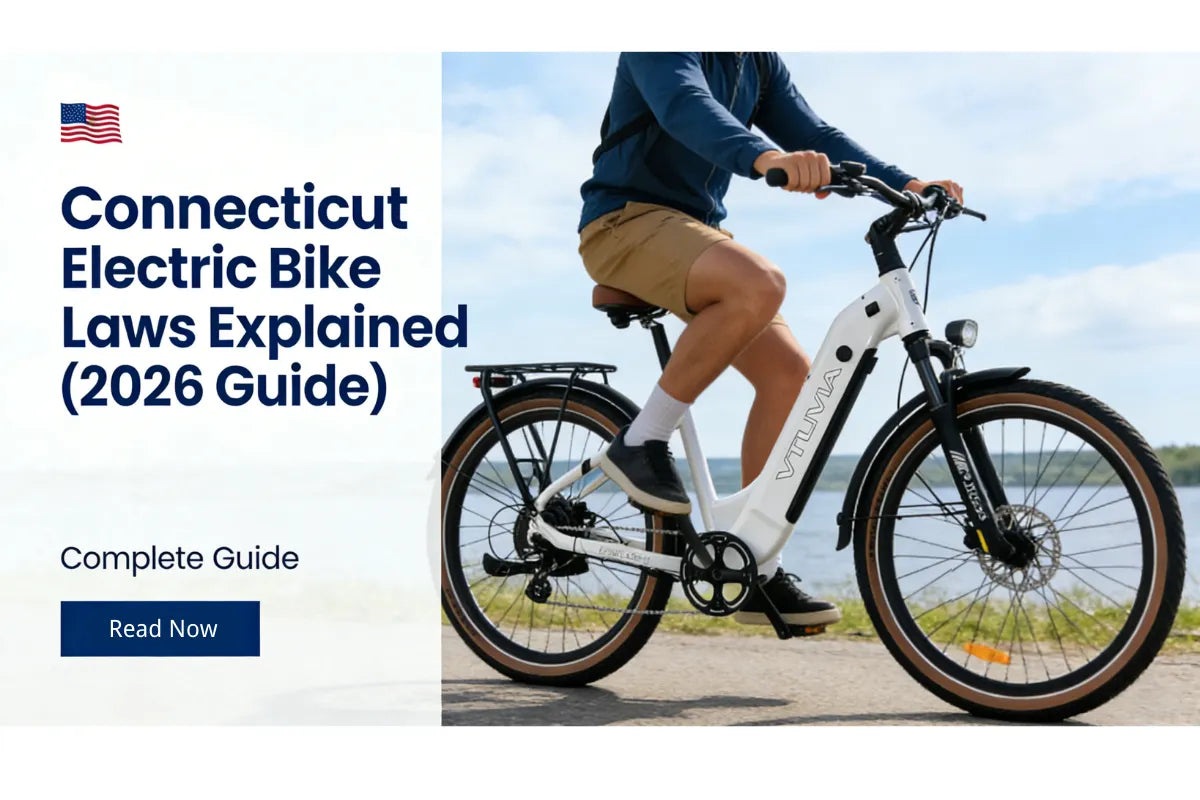Ensure your e-bike stays charged and ready for every ride with this comprehensive guide to charging methods, tips, and best practices. Learn the ins and outs of e-bike charging, including how to extend the lifespan of your battery and troubleshoot common charging issues.
Understanding E-Bike Batteries
Types of E-Bike Batteries
- Lithium-Ion (Li-ion): Most common, lightweight, energy-efficient.
- Lithium-Polymer (LiPo): Higher energy density, less common.
- Lead-Acid Batteries: Older technology, heavier, less expensive.
- Nickel Metal Hydride (NiMH): Moderate cost, balanced performance.
Key Terms to Know
- Watt-Hours (Wh): The amount of energy a battery can store.
- Amp-Hours (Ah): Determines the duration of battery supply.
- Voltage (V): Affects speed and range of the bike.
Battery Capacity and Range
E-bike battery capacity directly influences your riding range. Here’s a general guide:
- 300Wh: 20-40 miles
- 700Wh: 40-80 miles
Factors like terrain, rider weight, and weather can affect these estimates.
Pro Tip: For your VTUVIA e-bike, check your specific model’s range to ensure you’re getting the most out of each charge!
E-Bike Charging Basics
How Does E-Bike Charging Work?
Charging your e-bike involves converting AC from the wall into DC power for the battery. Most e-bikes come with either a standard charger or a smart charger.
Charging Ports & Connections
- Direct Charging via the Bike’s Port: The simplest method, ideal for daily use.
- Charging via Removable Batteries: Ideal for apartment dwellers or when your bike is far from an outlet.
How to Charge Your E-Bike: Step-by-Step
- Remove or Keep Battery On (depending on your bike model).
- Plug the Charger In: Ensure proper connection to avoid short circuits.
- Check the LED Indicators: Red means charging, green means fully charged.
- Reattach the Battery Once Fully Charged.
- Secure the Battery Using the Key for Safety.
VTUVIA Tip: Make sure to follow the steps exactly to protect your VTUVIA e-bike’s battery from damage during charging!
Advanced Charging Tips
How to Maximize Battery Life
- Avoid charging your battery to 100% regularly; aim for 20-80% for longevity.
- Always use the charger that came with your e-bike, or one approved by the manufacturer.
- Store your battery in a cool, dry place away from extreme temperatures.
Hibernate Mode and Reviving the Battery
If your VTUVIA e-bike battery enters hibernate mode, follow these steps to revive it:
- Plug in the charger and connect it to the battery.
- Unplug and re-plug the charger back in.
- The LEDs will light up, indicating the battery is ready to go!
Charging E-Bikes on the Go: Exploring Alternative Options
E-Bike Charging Stations
Finding a charging station is easier than ever. Use apps like PlugShare to locate stations nearby. Some public stations are free, while others charge a small fee.
Charging from a Car or RV
If you’re traveling, use a 12V car inverter to charge your bike. Just make sure your car engine is running to avoid draining your car battery.
Solar Charging for E-Bikes
Invest in a solar panel or solar generator to charge your e-bike off-grid. This is ideal for camping trips or remote areas.
Troubleshooting Common E-Bike Charging Problems
Battery Not Charging? Here's What to Check
- Check the connections between the charger and the battery.
- Ensure your battery is compatible with your charger.
- If there are no LED lights, the battery might be dead or damaged.
Temperature Problems
Charging in extreme temperatures can harm your battery. Always charge in a dry place, away from heat sources or freezing conditions.
The Future of E-Bike Charging: Trends and Innovations
Wireless Charging for E-Bikes
Wireless charging technology for e-bikes is on the horizon. Stay tuned for developments in this area, which could revolutionize how we charge our bikes.
Fast-Charging Technologies
Future fast chargers promise to reduce charging times while preserving battery life.
Portable Power Stations and Their Growing Role
Portable power stations are becoming increasingly popular for long-distance riders, ensuring you never run out of charge on your adventures.
E-Bike Charging FAQ
- Can You Charge Your E-Bike in the Rain? Always check that your charger and battery are dry before use.
- How Long Does it Take to Charge an E-Bike? Charging times vary, but most e-bikes charge in 3-6 hours with a standard charger.
- Can You Leave an E-Bike Charging Overnight? It’s not ideal, but many modern bikes are designed to prevent overcharging.
- What Happens if I Overcharge My E-Bike? Overcharging can damage the battery and shorten its lifespan.
Actionable Checklist: E-Bike Charging Best Practices
- Before Charging: Ensure the battery is safe and the charger is compatible.
- During Charging: Monitor the charging time and avoid extreme temperatures.
- After Charging: Secure the battery and store it properly for longevity.
- Storage: Charge to 60% for long-term storage, check every 3 months.
Debunking 5 Common Myths About E-Bike Charging
-
Myth #1: “It’s okay to always charge overnight.”
Truth: Overcharging can reduce battery life.
-
Myth #2: “All chargers are the same.”
Truth: Always use the recommended charger for your bike model.
-
Myth #3: “E-bike batteries should be fully drained before recharging.”
Truth: Charge when your battery is at 20-80% for best performance.
-
Myth #4: “Cold temperatures are fine for charging.”
Truth: Charging in cold temperatures can damage your battery.
-
Myth #5: “Fast chargers will always damage your battery.”
Truth: Modern chargers are designed to prevent battery damage.





Share:
How to Replace eBike Brakes: Complete Step-by-Step Guide
How to Adjust Your Bike Seat: The Complete Guide for Comfort & Performance